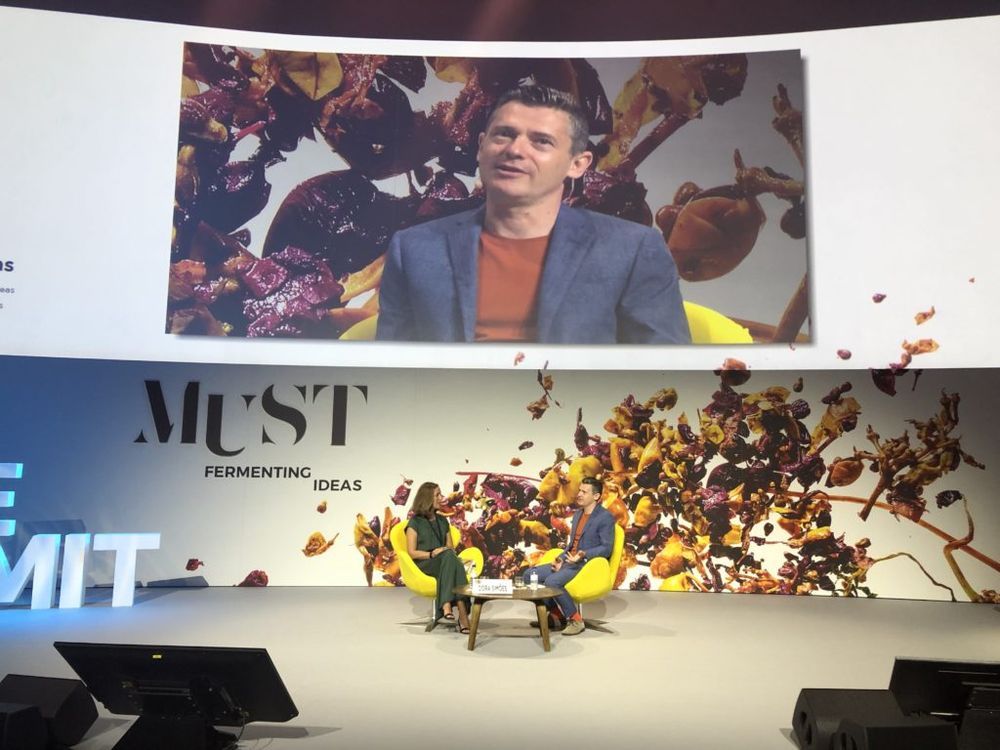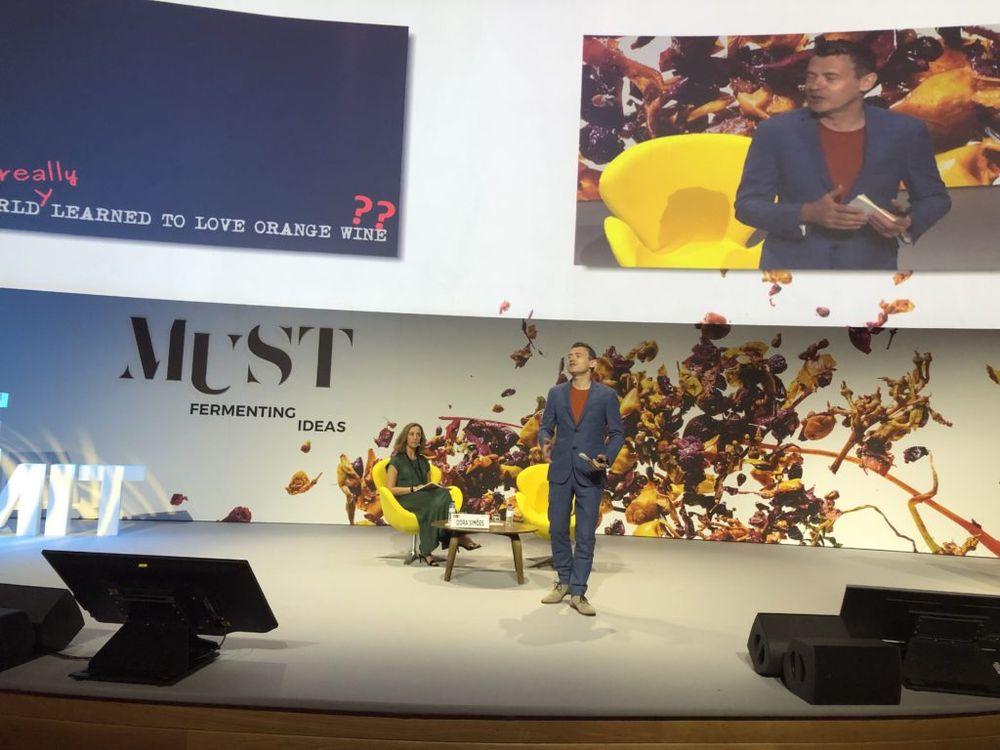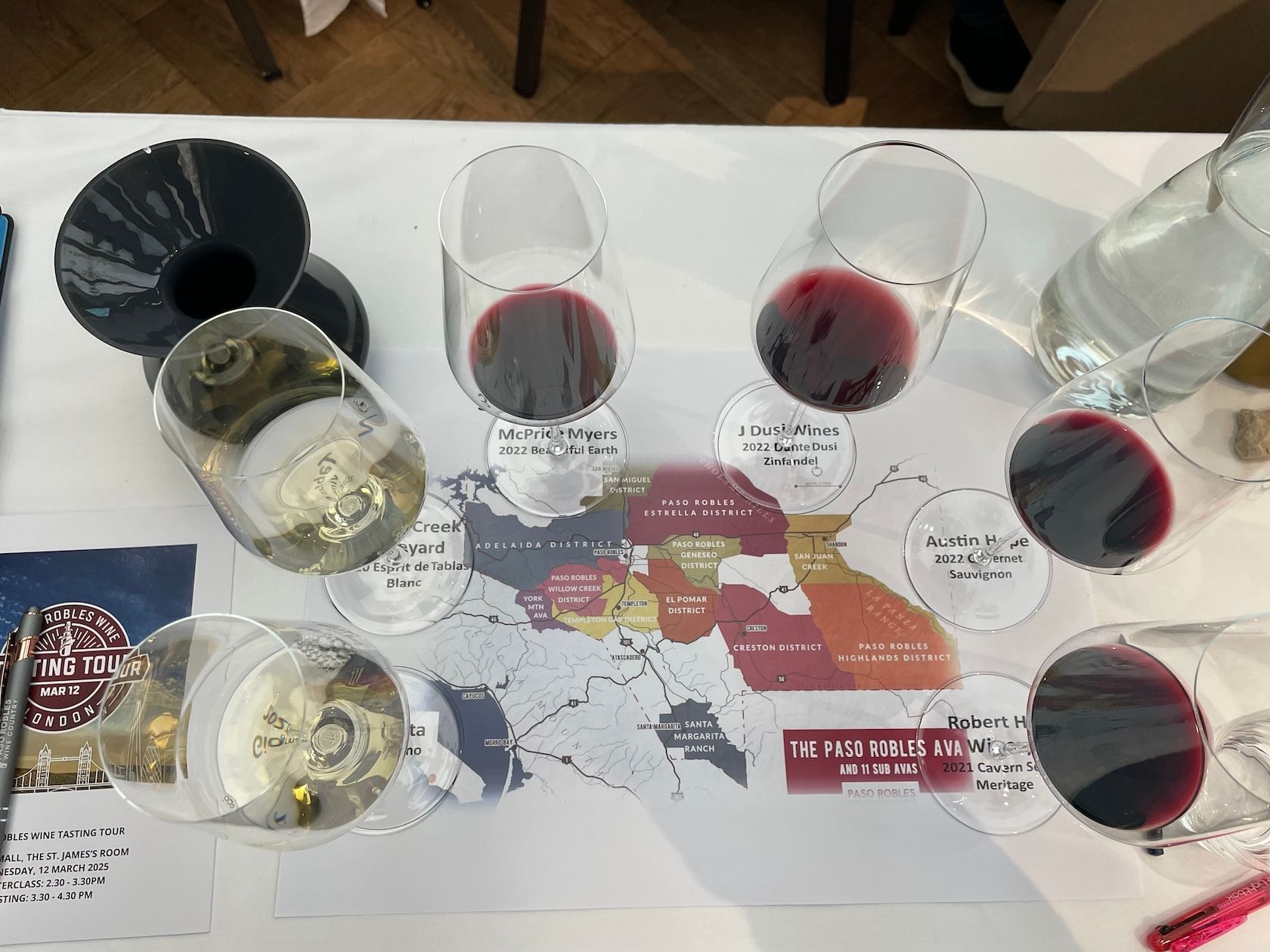Where do you stand on orange wine? According to Simon Woolf the consumer, admittedly a small section of wine drinkers, can’t get enough of them and they are changing the way an increasing number of younger people are getting into wine.
Simon Woolf says he “first got into orange wine” in 2011, when it was a very different scene to what it is now. In fact it’s fair to say there was not a lot to really “get into” in 2011 as the orange wine scene was not really a scene to speak of.
Fast forward to 2019 and we are, as he says, “in a very different place”. So much has changed that it does not seem strange to see Woolf stand up at a major international wine conference and ask the question: “Has the world really started to love orange wine?”
Woolf is convinced. So much so that the strapline of his breakthrough book on orange wine, the Amber Revolution, carries the statement: “How the world learned to love orange wine.

He admits at the time of writing that it felt quite a bold statement to make. But in the months that have passed it has become less and less of a brave thing to claim. More and more countries are switching on to orange wine. When Woolf wrote the Amber Revolution he said there were 20 countries that had producers making orange wine. It would now be at 34 and rising.
He claims there are now over 700 orange wine producers around the world with particular strongholds across Eastern Europe, noticeably in Slovenia and Georgia and then into Austria and Italy. “There is orange wine being made in every continent,” he said with new producers coming on board all the time, be it in Serbia or Greece, Argentina or Chile.
What is orange wine?
So what do we mean when we talk ab0ut orange wine? Put simply it is essentially white grapes that have been fermented with their skins on. Skins that then help the fermented juice turn orange.
“Orange wine is just a winemaking technique,” said Woolf at MUST.
Within the world of orange wine, there are some wines that are more orange than others. With those who prefer some deeper in colour orange wines than others. Woolf is not bothered either way. Providing they are orange.
“I don’t like to get hung up about the colour, in the same way that white wine is not really white but can be a range of colours,” he said.

Simon Woolf says orange wine do and should come up in a number of different styles
If you are still coming to terms with what orange wine is, then not to worry, for, as Woolf says, it is still a relatively new way of making wine. He traces the roots of orange wine back to 1997. And the work of natural wine pioneers from Italy, Stanislao “Stanko” Radikon and Joško Gravner.
He said they had to learn the hard way for others to follow and reap the rewards. In fact when they first started producing so called orange wines they lost a lot of customers, and up to 50 to 70% of their wines were returned. Often un-opened.
But they persisted and slowly but surely “more people started to see what they were doing” and the reinvention of what wine is all about started, said Woolf. “An attempt to find an authenticity in wine.”
Building momentum
From around 2000 the orange wine scene started to build thanks to a “few evangelists” in key markets like New York, which attracted journalists and sommeliers alike.
The big change came in 2003 when Radikon first went to Japan to show his wines. That was then a real momentum started to happen around orange wine. In fact Japan has become one of the most important and dynamic markets for orange wine.
So much so that when Radikon now visits Japan, not only do his wines sell out as soon as he bottles them, but he is welcomed like a celebrity. “These are wines that sell for €100 and more,” said Woolf.
“I went to Japan for first time last year and it really is a paradise for orange wine drinkers. There are hundreds of orange wines from all over the world. I held a tasting in Osaka and there were 70 orange wines there,” he explained.
“Most winemakers now say they can out sell their wines in Japan. Why? It could be the umami factor and how well they pair with Asian cuisine. Japanese consumers also love strong sustainability stories and orange wines fit nicely into that.”
Japan has also become an influential wine producing country for orange wine in its own right. Its cool climate makes it an ideal location, plus, explained Woolf, “there are a lot of US hybrids in Japan and they can be good for orange wine”.

Orange wine is now being made in every continent in the world and a growing number of wine countries
But arguably the most influential orange wine country of them all is Georgia, particularly with its tradition of fermenting and making wine in qvevris. “Orange wine is very much part of its DNA,” said Woolf.
“There has been an extraordinary growth in the number of Georgian producers who see the commercial opportunity for orange wine. There were five producers in 2009 and now there are over 200.”
All of which adds up to 3 million bottles of Georgian amber wine being made every year, according to the Georgian Wine Agency.
Wines that have reached the mainstream in the UK. There is now an orange wine in M&S from Georgia, a Romanian orange wine in Aldi, produced by Cramele Recas, an orange wine in Asda version and other big chains around Europe have followed suit, like Hema in the Netherlands.
“Supermarkets now realise there is a lot of interest in these wines. Supermarkets that are usually risk adverse. They know their customers have discovered orange wine,” claimed Woolf.
“Orange wine is now widely seen in local wine shops and fine restaurants. In 2011 it was very rare to see an orange wine on a list. Now in new, edgy Michelin-chasing restaurants it is quite common, if not a must, to have an orange wine,” he added.
New consumers

Natural wine bars have “exploded” in Amsterdam says Woolf
Orange wine is also bringing new, younger consumers into wine, said Woolf. He points to Amsterdam, where he lives, as a good example. “We got our first orange wine bar in 2015 and there has since been an explosion in these kind of bars. They attract a young audience, but these are not wine geeks. They are young people who want to go some where that is cool and when they do they want to have something their parents are not drinking. These are also people who like other niche trends like sake or sherry. So, yes it is a niche. But it is a growing niche.”
Better definition
As the orange wine sector grows and matures into a distinct wine category of its own then so does the pressure to be clearer, as with natural wine, about what we mean when we call a wine “orange”.
Woolf agreed “there should be a classification” to make things clearer and more transparent. Ontario and South Africa have already tried to put a line in the stand by describing them as “skin fermented” wines.
“There is a model there now for others to follow. It would be good to see France and Italy wake up to this and help producers categorise these wines,” said Woolf.
It was pleasing, he said, to see orange wines now accepted as part of the curriculum for the Master of Wine by the Institute of Masters of Wine. “The WSET is still dragging its heels,” he added.
“But we will get to the point where all these accreditations will have to include it in their syllabus in future,” he added.
As for the objectors and distractors who continue to throw cold water on orange wines? Woolf said it was time for them to catch up with what was happening in the sector.
“We see objections for orange wine from some traditional elements, who don’t understand how grapes can taste like this. But we don’t get this from young people as they have no baggage, no expectations, so they are embracing it more.”
That’s where the future of orange wine lies.










































